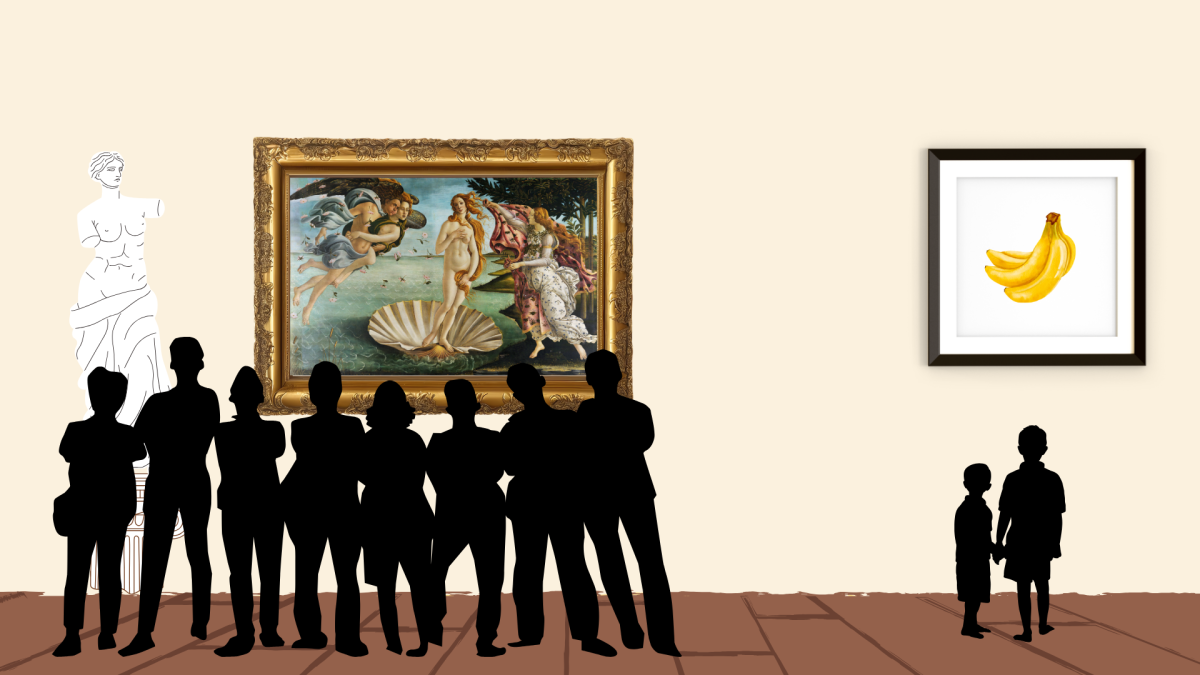Monet, Matisse, da Vinci, van Gogh, Caravaggio, Rembrandt, Michelangelo—these are all names of painters most people have heard of before.
But what about Kara Walker, Kiki Smith, Jaune Quick-to-See Smith, Jeff Koons and Bill Viola?
In school, when learning about history, we often also talk about the famous artists of the time.
But mentions of historical artists and how their works were related to the time periods in which they were made seem to end around the time of Frida Kahlo, who died in the 1950s, and Pablo Picasso, who died in the early 1970s.
After that, only a few classes discuss artists of the time. Basquait is mentioned occasionally, as are Warhol and Banksy.
But typically the focus is almost entirely on the classics. I remember learning about “Washington Crossing the Delaware” in elementary school when we talked about the Revolutionary War. We never discussed pieces such as Kara Walker’s pieces and how they relates to the perception of African Americans in U.S. culture.
Without modern and contemporary art in normal school curricula, people start to undervalue art that is currently being created today.
“I could do that” is often repeated in museums. People have a hard time trying to decipher the meaning behind a squiggly black line on a blank canvas, and it’s an understandable struggle.
Contemporary art followed a “movement” where artists questioned the actual meaning of art: the Dada “movement.”
Maybe you’ve seen images of a urinal flipped on its side to resemble a water fountain or a simple mustache and goatee painted on the Mona Lisa’s face—these are two of the most famous examples of Dada art.
After the Dada “movement,” artists seemed to accept the idea that anything can be art. Hence blank canvases being sold for thousands of dollars and pieces of trash on the ground considered revolutionary works of art.
This was liberating, perhaps, but it greatly angered the public and continues to today.
Artists are still struggling with an evolving definition of art and contemporary art can be viewed as a further challenge to the long-held conceptions and ideas about what constitutes art.
Contemporary art has given artists a space to explore outside of the traditional conventions of art.
They no longer have to adhere solely to realism or to historical depictions; now, they can experiment with things such as color in ways that would have been looked down on before, even though the general public seems to disapprove of this practice.
So why should we appreciate contemporary art?
If audiences don’t understand what artists are trying to say, why should the public care about their work?
That confusion (and sometimes hatred) of current artworks is exactly why we should value it. An audience’s reaction to these experimental pieces is a vital part of contemporary art.
In an article in The Michigan Daily, Zhane Yamin argued that “the movement itself hinges on the idea that the meaning of the art comes from within the audience and the importance shifts from whatever grandiose scene might be pictured in previous forms of visual art, to the person participating in the art itself.”
Contemporary art is challenging society’s current ideas regarding art, which might make it (arguably) one of the most important artistic movements in history, alongside Dada.
Art is subjective and there will always be people who question the value of today’s art.
But that does not mean it has no value—contemporary art, though controversial, is paving a path forward for future artists and it should not be ignored.
